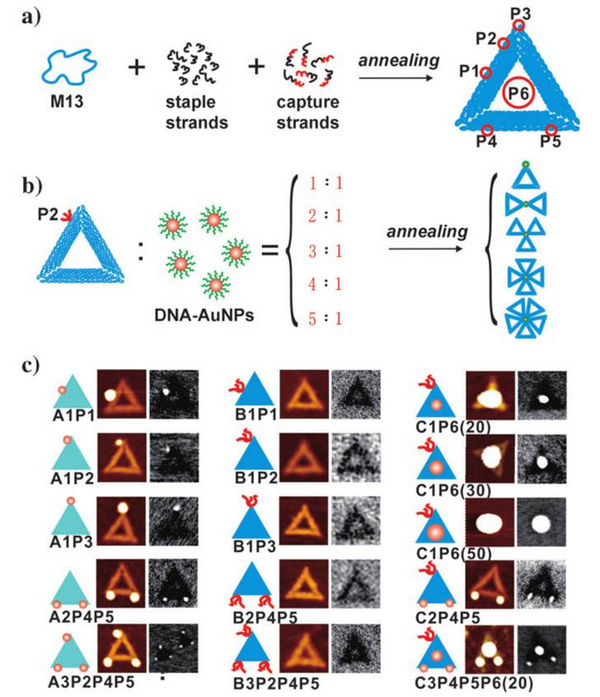DNA origami has rapidly emerged as a powerful and programmable method to construct functional nanostructures. In a typical DNA origami assembly process, a long M13 viral single-stranded DNA template is hybridized with hundreds of computer-designed sequence-specific short staple DNA strands to fold into predefined 1D, 2D, or 3D nanostructures. However, the size limitation of M13 DNA template in classic DNA origami (typically <150 nm, and molecular weight <50 MDa) hampers its wide applications.
Recently, a research team led by Professor Chunhai Fan from Shanghai Institute of Applied Physics, Chinese Academy of Sciences reported a jigsaw-puzzle-like assembly strategy mediated by gold nanoparticles (AuNPs) to break the limitation of DNA origami and the results were published in Angew. Chem. Int. Ed. 2015, 54, 2966. They demonstrated that oligonucleotide-functionalized AuNPs function as universal joint units for the one-pot assembly of parent DNA origami of triangular shape to form a range of highly-ordered sub-microscale super-origami nanostructures, which include flower-like structures with tunable number of petals, “planet–satellite” structures and some asymmetric structures. The largest nano-structure comprises more than ten DNA origami triangles, with the overall size reaching almost the micrometer scale and the molecular weight over 50 MDa. AuNPs anchored at predefined positions of the super-origami exhibited strong interparticle plasmonic coupling. This AuNP-mediated strategy offers new opportunities to drive macroscopic self-assembly and to fabricate well-defined nanophotonic materials and devices. 

